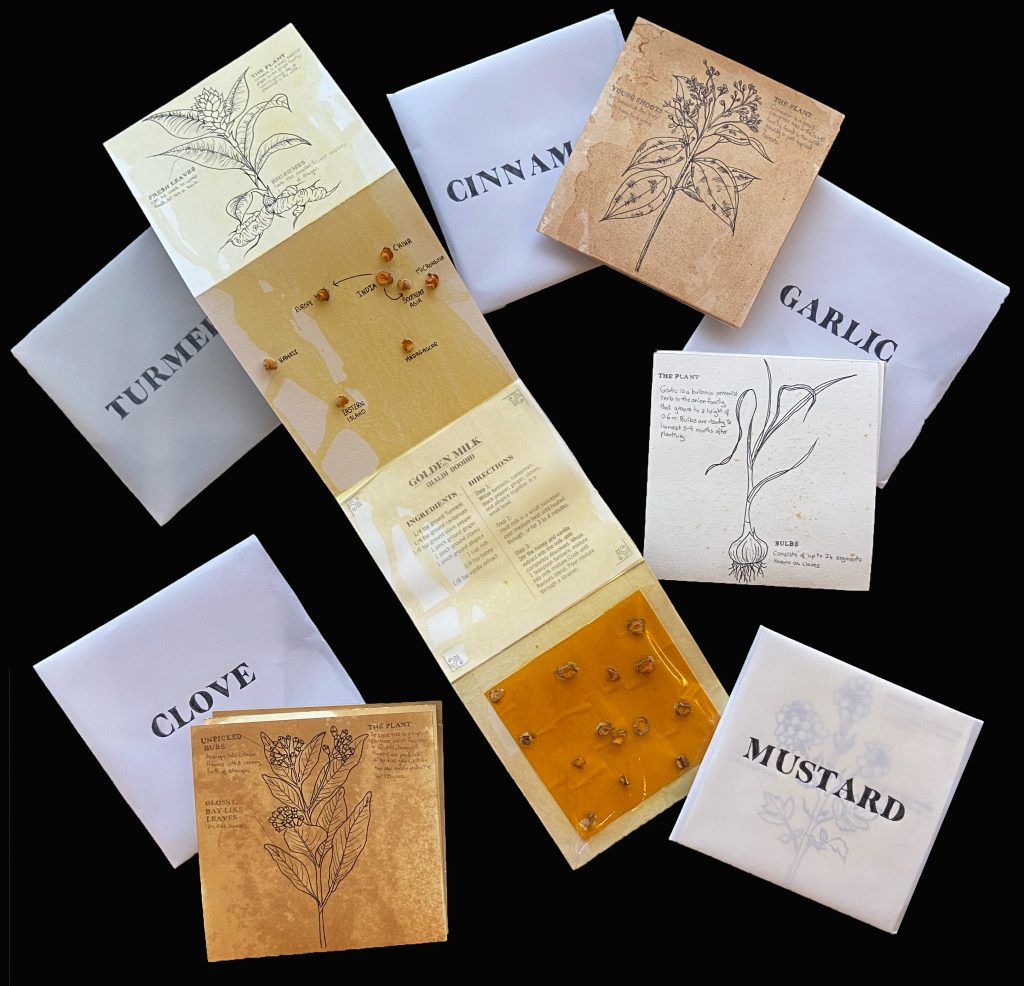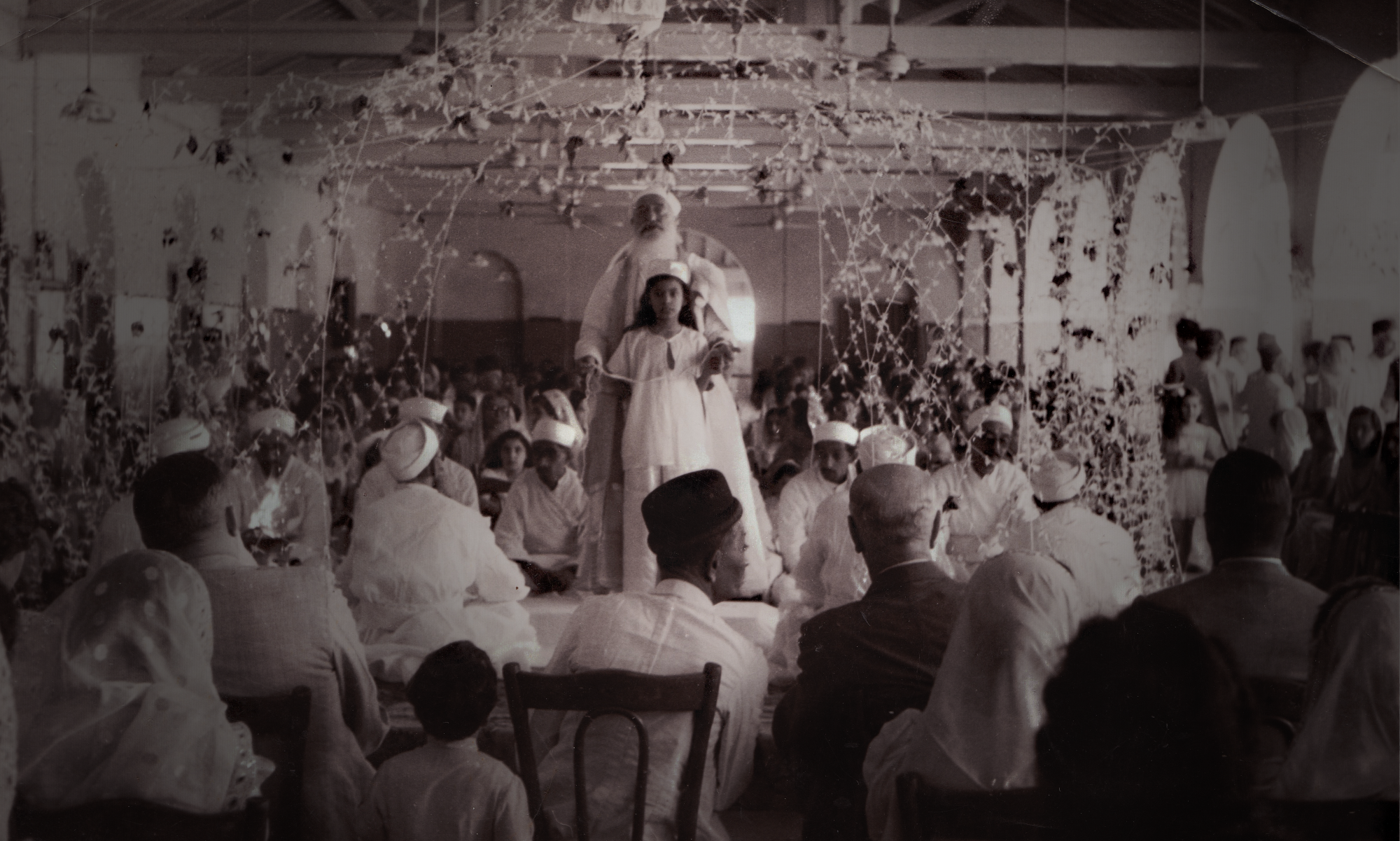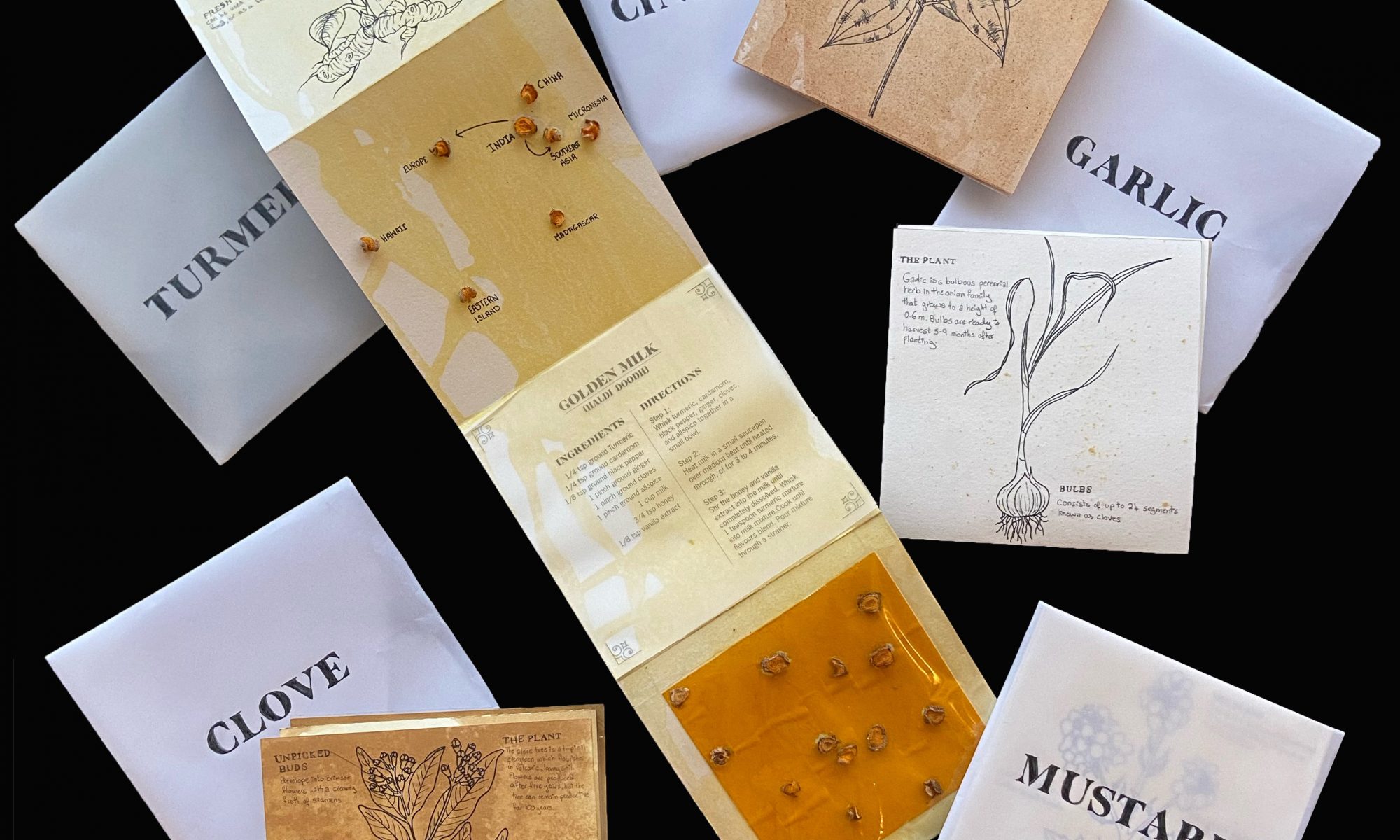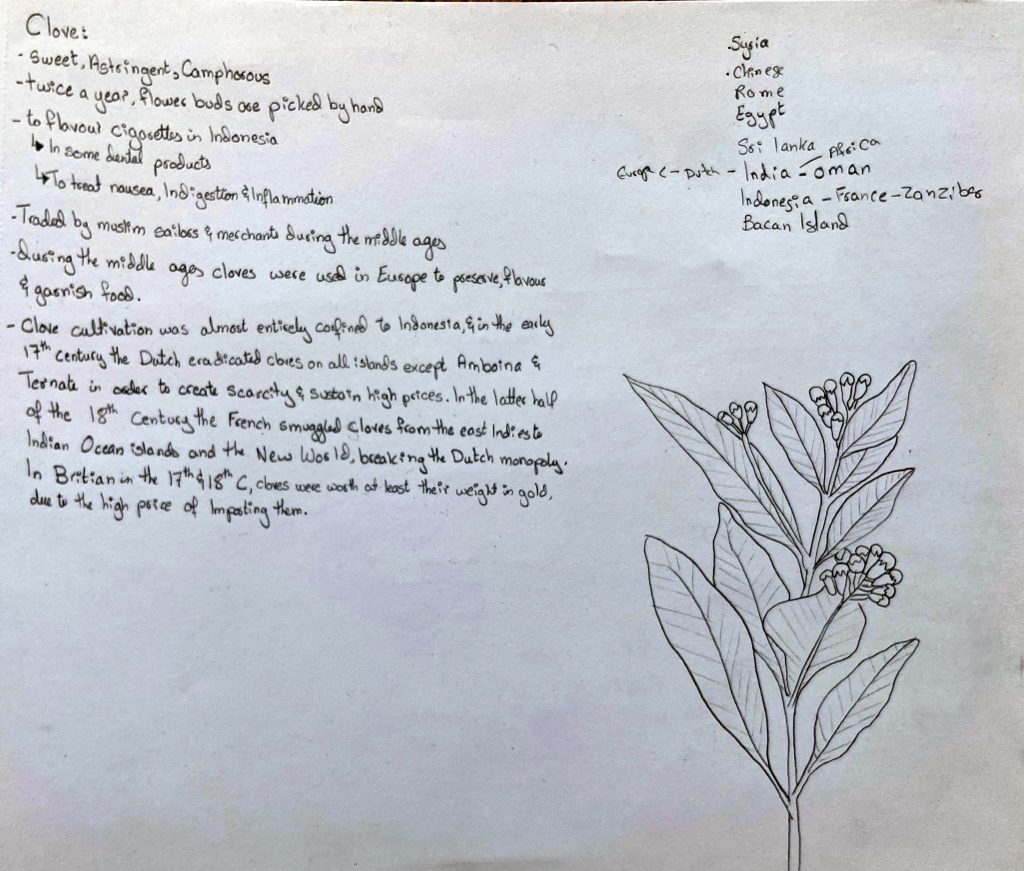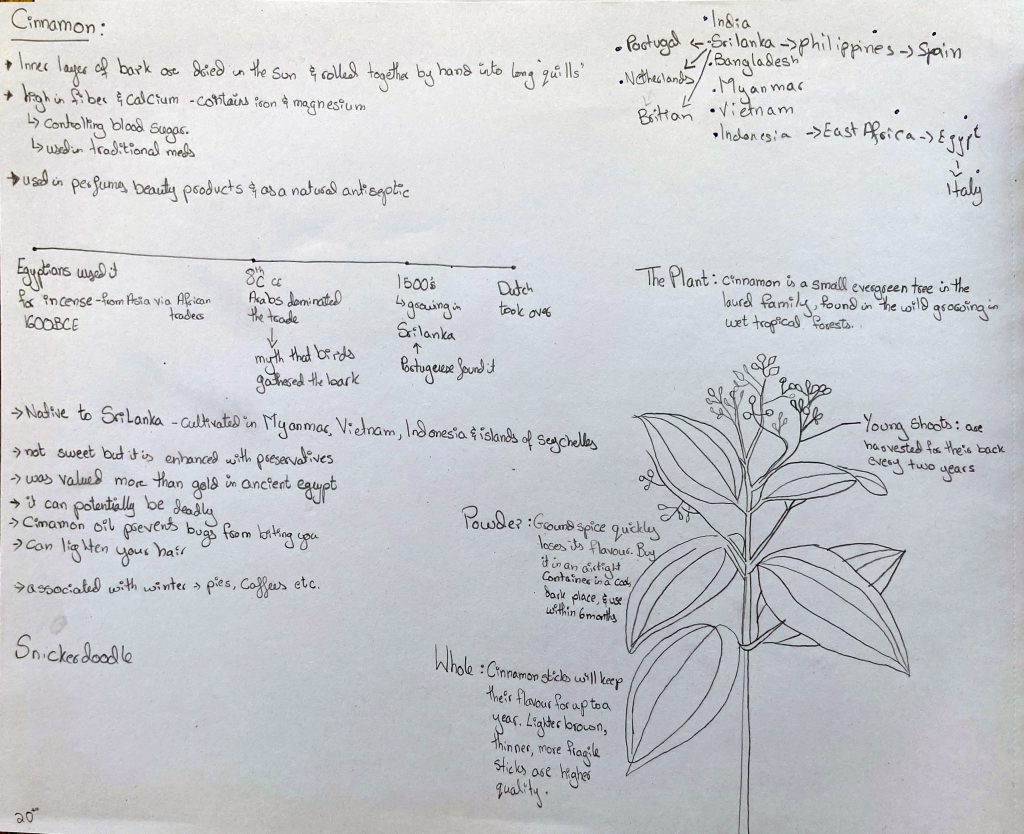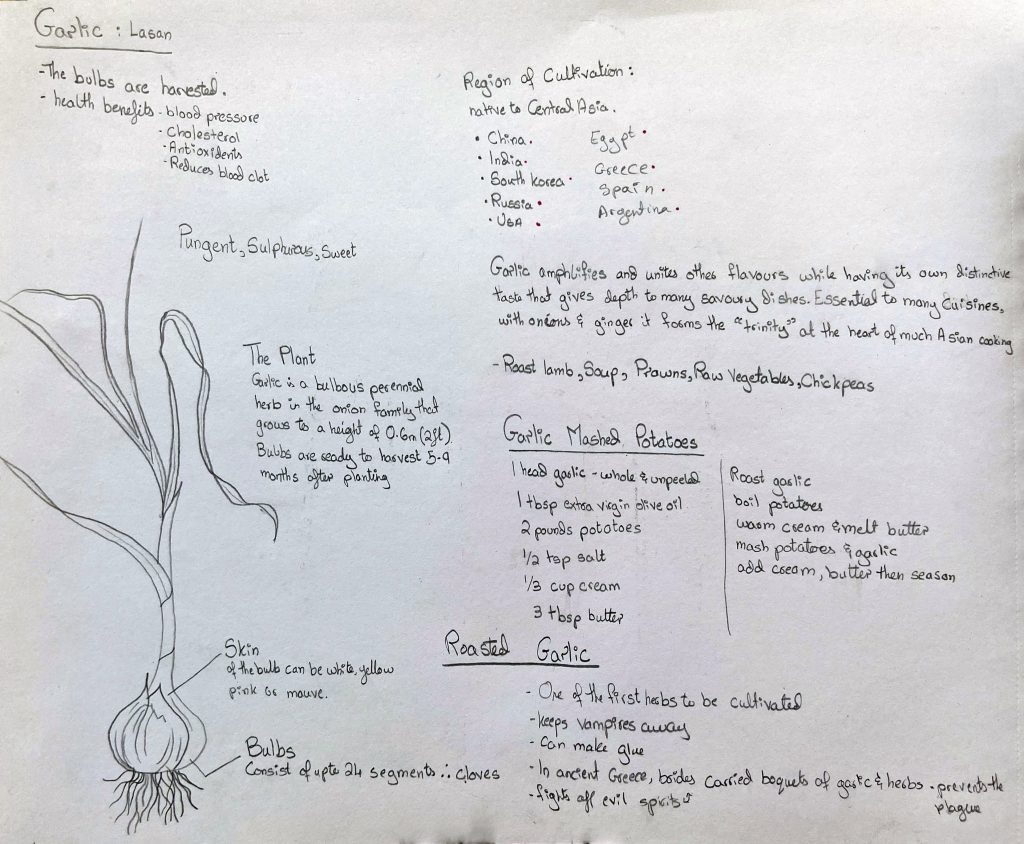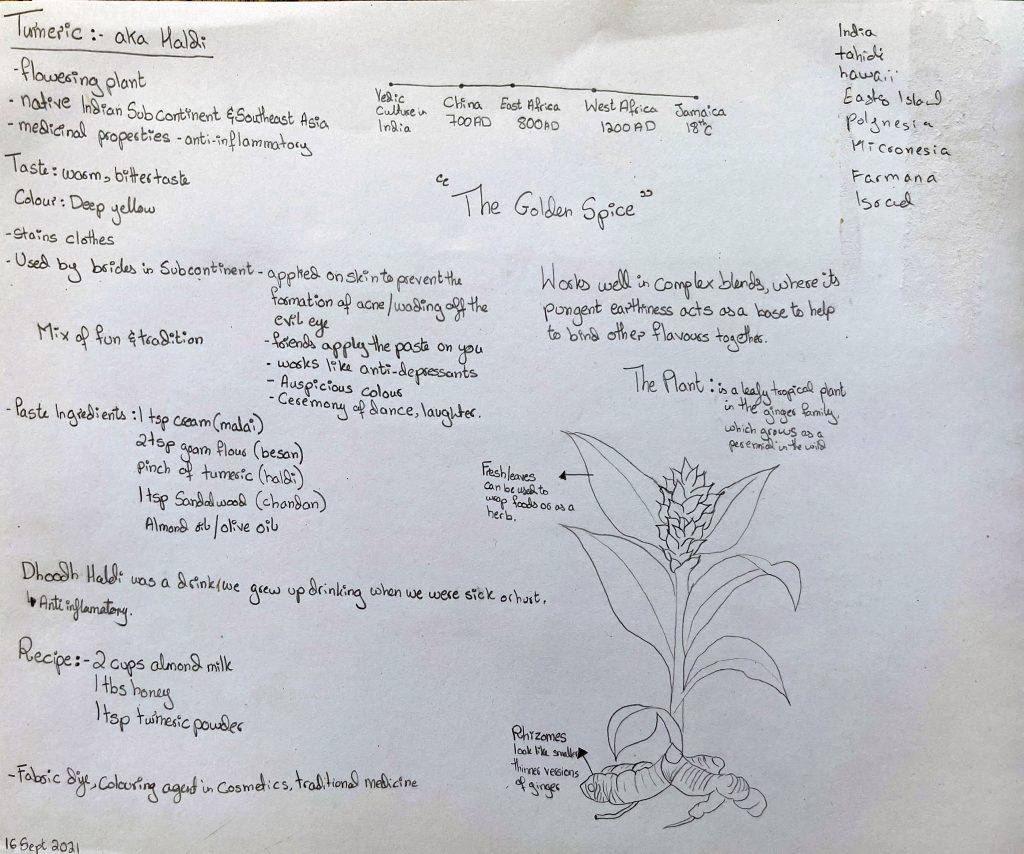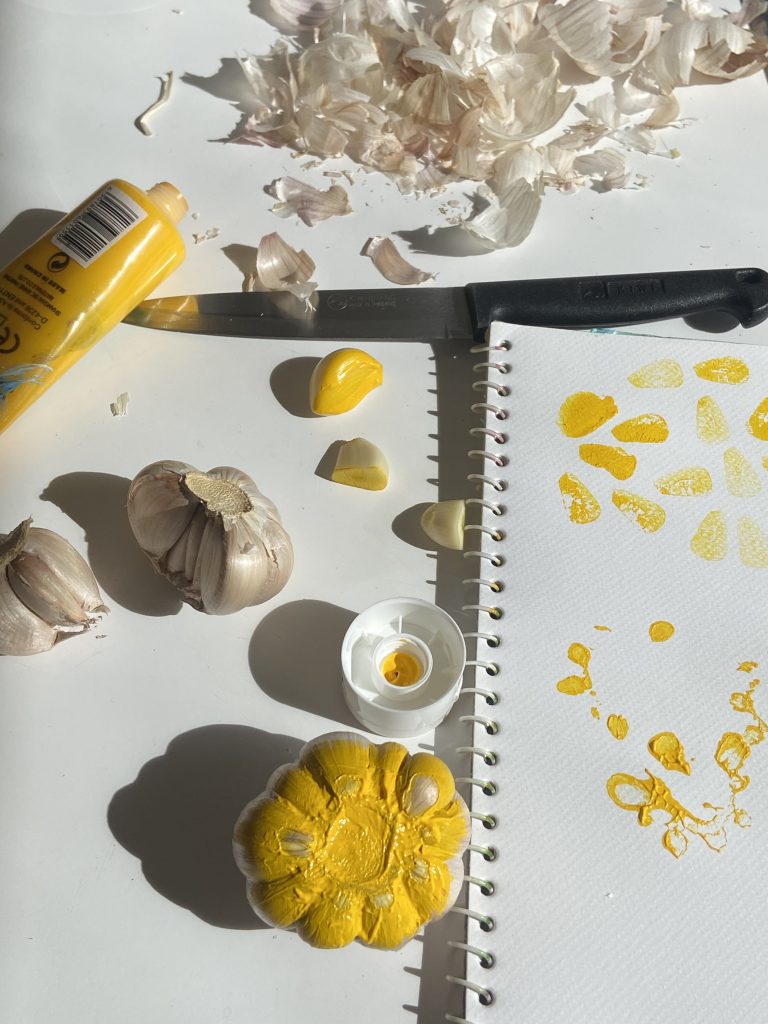GSMD-500 | Grad Studio 1
Prompt 2 : Material
Clay, Paper, Coding, Thread… these are just some of the materials I have always wanted to work with; but as soon as we were explained the brief, I was fixated on working with spices. I use spices every day to cook, but I do not know much about them.
The Daily Practice:
My daily practice was threefold. After I had chosen a spice for the day, I would begin thoroughly researching it. I would research into the plant that the spice came from, where it is cultivated and which countries it is being traded to. I would then look into the facts about the spice and all of its benefits and detriments; along with the non-culinary uses of the spice, for example, Turmeric is used in a holy bath ritual known as pithi ceremony, which is a pre-wedding ceremony in India.
I then went on to experiment with the spice itself. On a sheet, I played around with its texture, colour and even taste (I would taste the spice and with a pencil, I would create a line of what I could taste). I would create audio clippings of the sound made as I was experimenting, for example when pealing garlic or cutting into chillies. I then would use these cuttings to create patterns and textures on the sheet.
The final step was finding a recipe in which my spice of the day was the hero. Many recipes were those I have grown up eating/drinking in my hometown Pakistan or recipes passed down from generation to generation in my family.
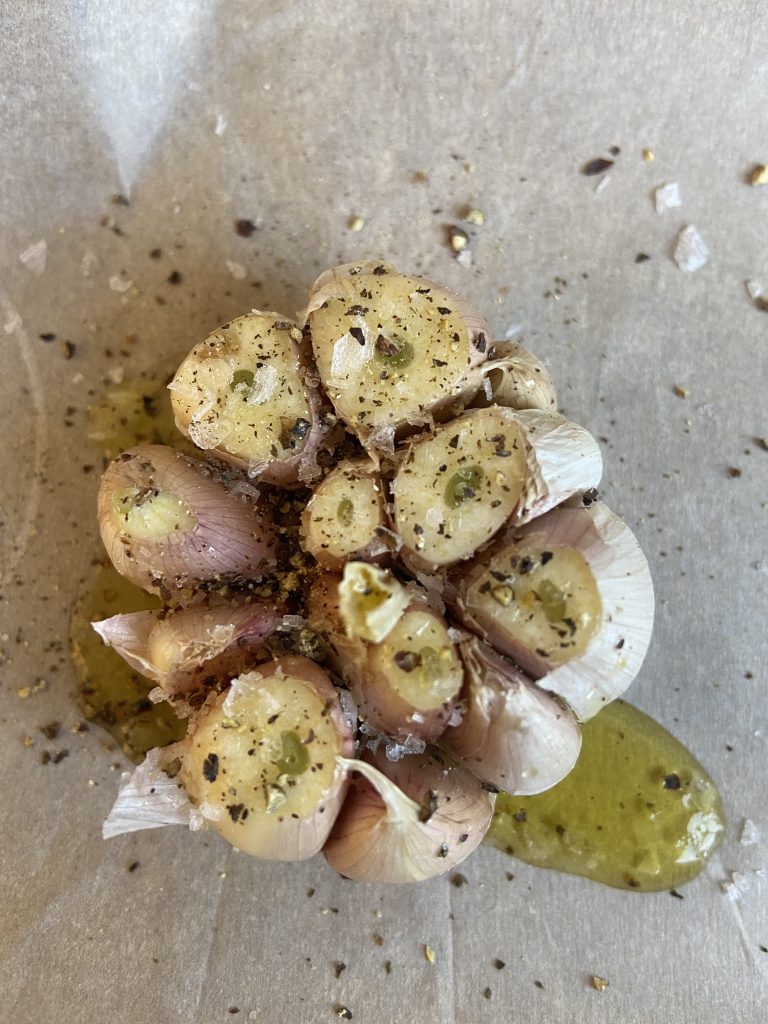
Roasted Garlic 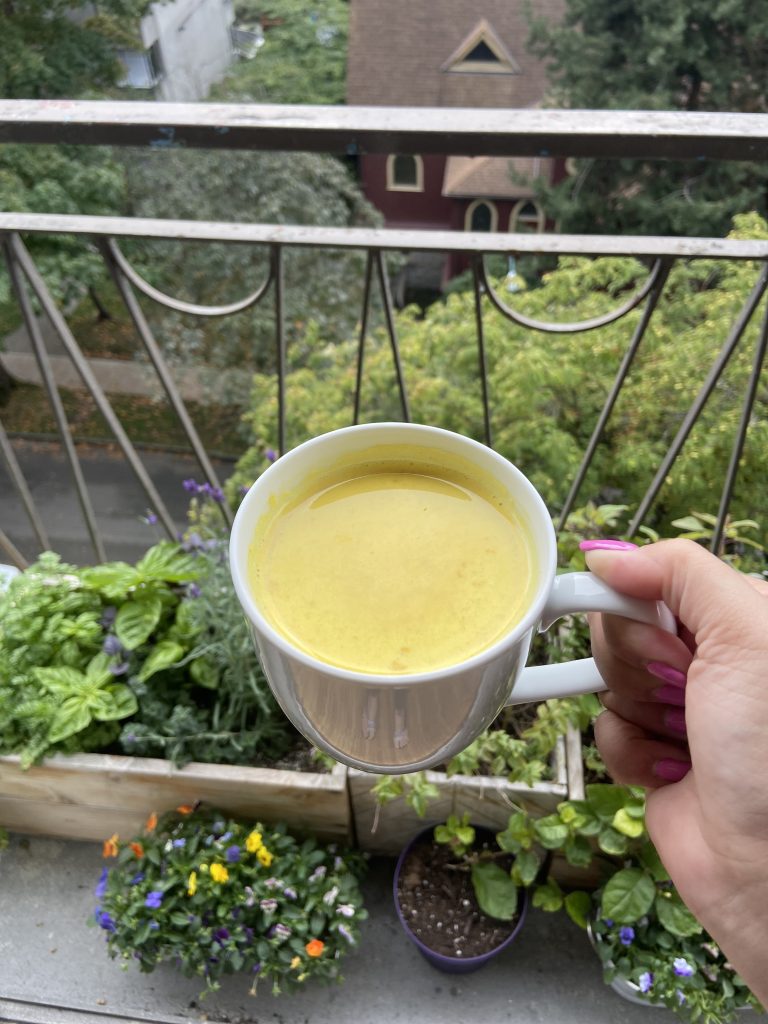
Dhoodh Haldi 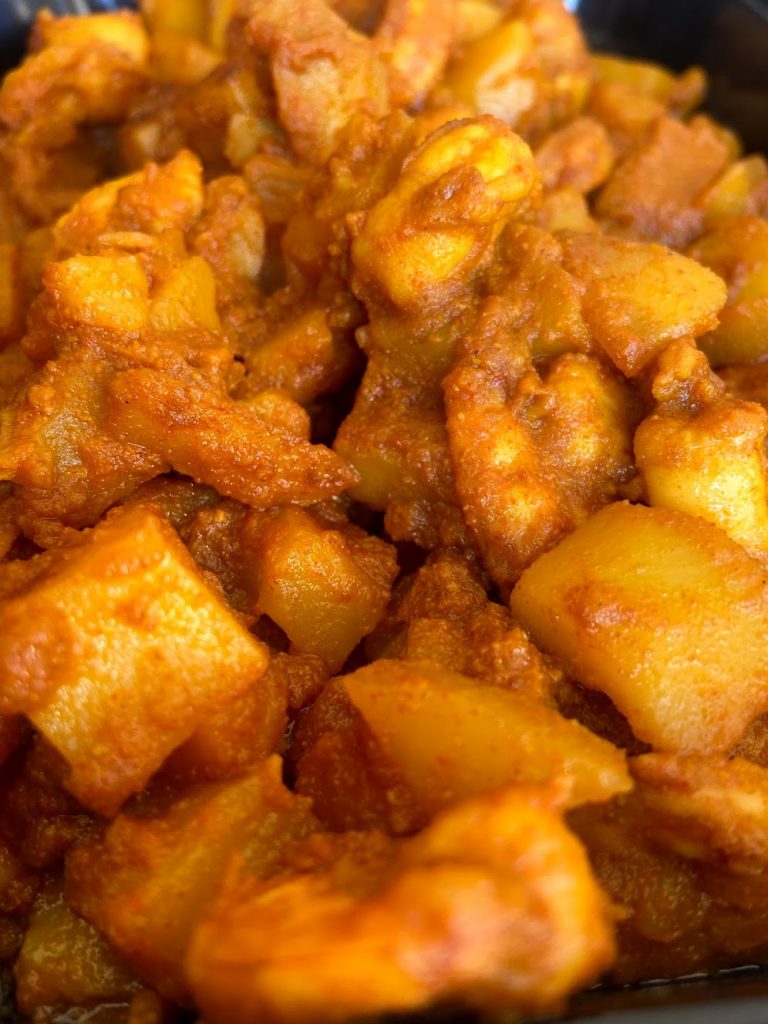
Ghinga Papeta
The Synthesis:
After collecting all this information and experimentation over a week, I decided to create the Spice Pack. Each Pack contained information about a single spice. I used an accordion-style fold, to divide each section of information on the spice.

Step 1: Staining the paper
Each sheet was stained with a mixture created with water and the powdered version of the spice. Unfortunately, many of the spices did not mix with water to create the texture, and therefore I would boil the solid spice until it created a colour.

Step 2: Drawing
I then continued to create a detailed outline drawing of the spice in its plant form. Along with this, I gave a few pointers on the plant and its spice.

Step 3: Mapping
Something that stood out to me was the locations where each spice was grown and traded to. To represent this I began by mapping out these locations on the paper. I then used cut pieces of the spice (or the spice itself) to represent a geotag of the locations.

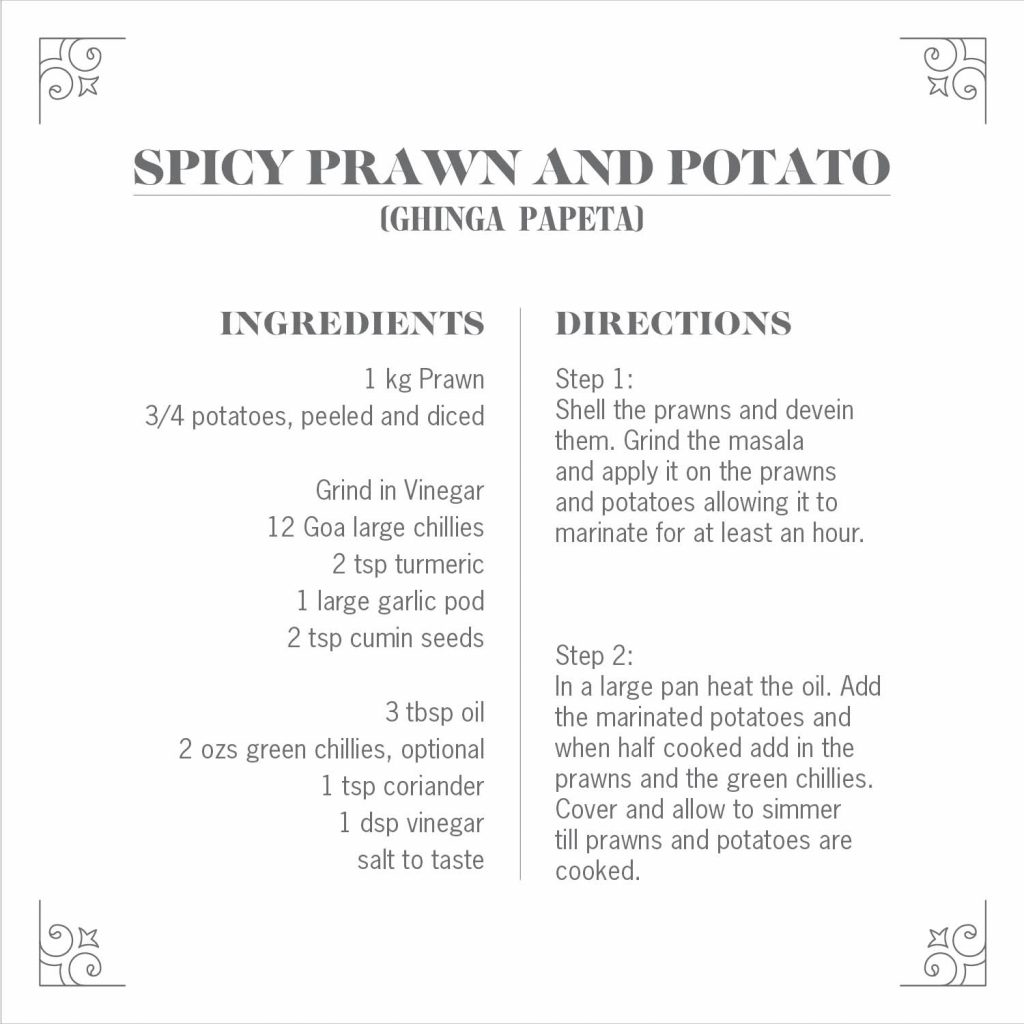
Step 4: Recipe
For the next section, I added a recipe that…..
The recipe was printed on butter paper, to allow the user to be able to still see the stained paper in the background.

Step 5: Textural Exploration
For the final section I decided to share with my audience a textural exploration of the spice. I began with creating the base made of the powdered form of the spice. To add more to this texture I placed pieces of the solid spice ontop. Some spices such as the chilli had seeds which I also used to add to the texture.
The Spice Pack:

